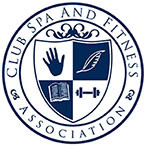7 Bad Fitness Habits Your Clients Should Break
Are your clients sabotaging their own fitness goals? They could be, if they’re making poor choices in their workout habits.
Sticking to an exercise regimen can become arduous and monotonous for the average gym-goer. It can be easy to fall into bad fitness habits that make getting through a workout a little easier or a little faster. Fitness trainers know that bad habits not only compromise a person’s ability to get the most from every workout, but in some cases can be physically unsafe.
An important part of your coaching is making your clients aware of unfavorable workout habits and why they should avoid them.
Bad Habit #1: Unreasonable expectations
You’ve probably encountered more than one client who’s come to you with very lofty personal fitness goals. Unreasonable expectations are a bad place to begin a fitness regimen. You can help those clients break down that one big goal into measurable milestones to help them understand that it will take time to reach that ultimate goal. Remind your clients that their optimal fitness level is a long-term project that can be achieved, but only by setting reasonable goals.
Bad habit #2: Overdoing – and underdoing – it
It’s important that your clients are aware of their physical limitations during training sessions and when working out on their own. This applies not only to over-exerting, but also to not pushing beyond their comfort zone.
Driving to feel the burn is one thing, but overdoing it—or, pushing through acute or persistent pain—can lead to serious and lasting injury.
Likewise, undertraining is a habit that does no good for any trainee. The great reward of working out is to improve fitness level. Never exerting beyond a level that feels comfortable makes workouts much less effective, and leads to a greater chance of giving up when results don’t materialize. As the saying goes, “no pain, no gain”—and it’s true when fitness goals are at stake.
Fortunately, you can help your clients understand the difference between a safe intensity level and when physical signs indicate a stopping point.
Bad Habit #3: Going hungry
Hitting the gym on an empty stomach is not recommended. As the intensity of a training session ramps up, the body’s blood sugar level runs low, leading to undesirable effects like sluggishness, dizziness and overall poor performance. To get the most out of a workout (i.e., burn calories most effectively), your clients need good stamina that can be achieved by eating a healthy meal or snack prior to a workout.
Keep a stash of healthy snack bars or on hand for those times when your clients need a quick pick-me-up so they can make the most of their training session. And remind them that working out while hungry is never a good idea.
Bad Habit #4: Under-hydrating
Not consuming enough H2O during exercise is a habit that must be broken! We touched on the importance of staying hydrated in our post on Safe Summer Workouts, but it’s crucial no matter when or where your clients are working out. Remind them that water consumption isn’t just important when they’re dripping with sweat or are really winded. Proper hydration is necessary before, during and after every type of workout, to replenish what the body loses through exercise and prevent unnecessary physical implications due to thirst.
Bad Habit #5: Not warming up or stretching
Skipping warm-up and stretching are probably the two most common habits people fall into. When time is of the essence and a quick 20-minute workout is in order, time for warming up and stretching often falls by the wayside.
Your clients should know that the type and necessity of warm-ups depend on the type of workout that will follow. A well-rounded warm-up should always precede an intense workout and any sports activity, but leading into a 30-minute stint on the treadmill or weight training, it may be OK to skip an official warm-up, as long as the workout starts out slow.
If you’re like most fitness trainers, you’ll advise that at least some basic stretching is beneficial no matter the intensity or type of the workout so that muscles are primed and there’s less risk for strains and soreness hours after the exercise. Also, remind your clients the importance of incorporating stretching into their daily activity, not just before and after a workout, to establish good flexibility.
Bad Habit #6: No cooldown period
Cooling down is another part of the workout process that commonly gets skipped. What most people forget at the time is how cooling down at the end of a workout helps keep lactic acid from building up in the muscles, an effect that reveals itself hours later with sore muscles. Cooling down with stretches is also a smart way to increase flexibility, as muscles are more pliable when they’re warmed up.
As a good rule of thumb, always include a brief cooldown period in your personal training sessions as example of a best workout practice.
Bad Habit #7: Groundhog Day approach
The Groundhog Day approach to working out—doing the very same workout every time you’re in the gym—is easy to fall into. This is a bad habit to get into because the body eventually adapts to the exercise it’s given and progress comes to a halt.
One of the fun things about your job as a fitness trainer is exposing your clients to a variety of exercises to help them be creative in their workouts and stay motivated. Your expertise allows you to incorporate an effective and stimulating mix of cardio with strength training to help each client maximize their workout and target their personal fitness goals.
Offering fitness tips to help your clients overcome bad habits and better achieve their fitness goals is a valuable part of your personal fitness training services. A good habit (and business practice) for fitness professionals is to purchase and maintain a personal Professional Liability Insurance policy. A policy in your name will protect you personally if a claim of your negligence is made against you. Learn about Lockton Fitness Professional Liability Insurance.
Customer Feedback
-
Thank you so much for your prompt response. Might I add, Veronica was a delight to work with and her professionalism and attention to detail made this an overall pleasurable experience.

Earl W.




















